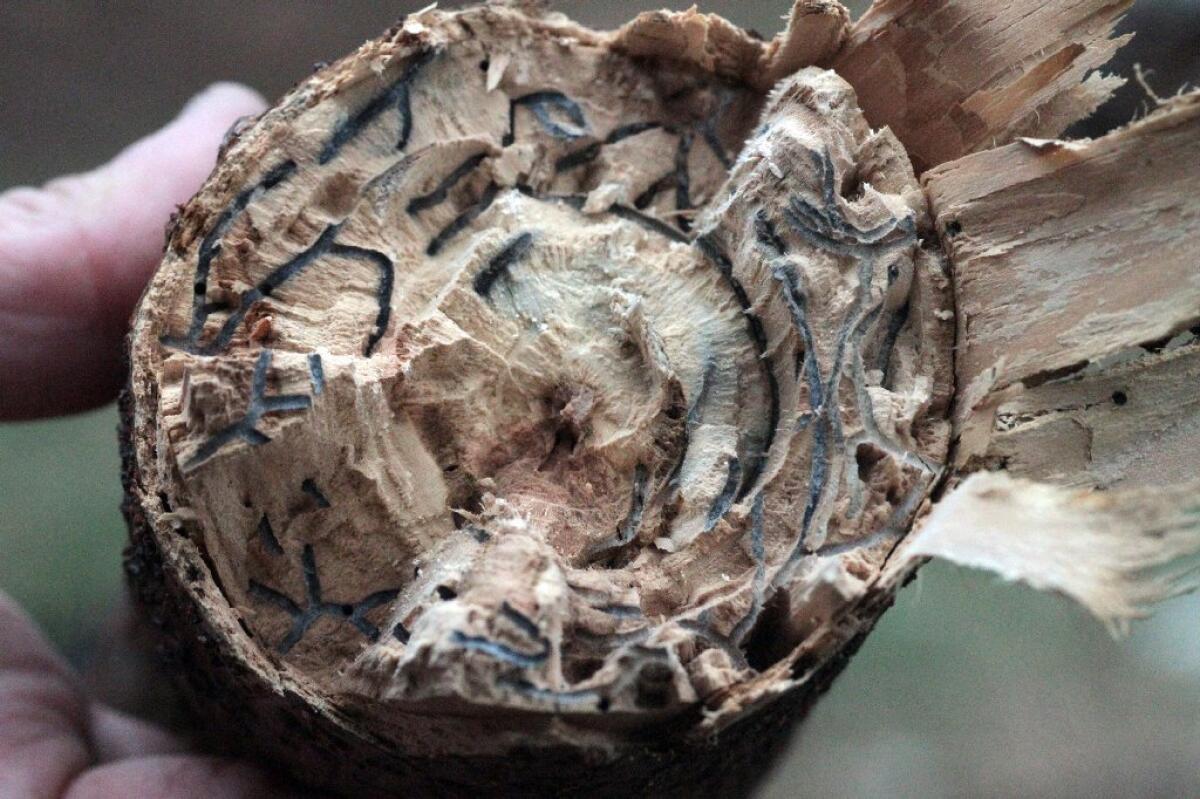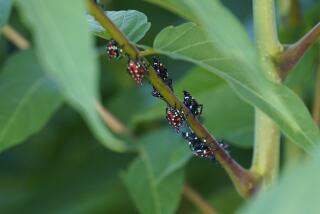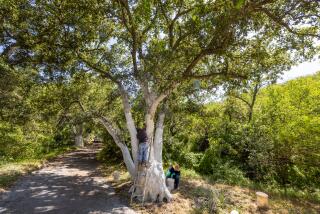What to do if the polyphagous shot hole borer attacks your trees

- Share via
The polyphagous shot hole borer is a type of ambrosia beetle that has attacked hundreds of tree species in Southern California, and it carries fungal spores that can infect, and kill, a subset of those plants.
On May 27, officials from the California Department of Food and Agriculture, the California Avocado Commission, UC Riverside scientists and others gathered in Sacramento to review the latest intelligence on this pest’s habits and whereabouts and discuss how to respond to it.
While authorities tackle the beetle threat, here are a few tips for dealing with the beetle if you encounter it on a tree.
Identify the symptoms. These vary from species to species, but they typically include tiny little pinholes in the tree bark and sawdustlike powder, called frass, around the holes. There may also be large sap stains around these holes.
You can dig deeper by scraping off the bark layer around the infected area and looking for the beetle in its circular tunnels, called galleries.
Look for other infected species in the area. Here are just a few common landscape trees in Southern California that are known hosts: box elder, castor bean, avocado, coast live oak, English oak, valley oak, California sycamore, big leaf maple, Japanese maple, red willow, goldenrain tree, olive, persimmon, silk tree, American sweet gum, coral tree, weeping willow, blue palo verde, palo verde, Chinese willow and white alder.
Dispose of diseased wood carefully. If you remove infected branches or trees, it’s best to put the wood through a chipper; this should kill most of the beetles. Put a tarp over the chipped wood for at least two months in direct sun; the heat should bake remaining beetles to death.
Do not move potentially infected wood! Many pests, including this beetle, can easily hitch rides to new territory on chopped wood. Visit the Don’t Move Firewood campaign for more information.
Don’t spread the disease. Using a contaminated knife on trees is akin to humans using unsterilized hypodermic needles. If you’re cutting into multiple trees, sterilize tools to prevent to spread of the fungal disease with either 25% household bleach solution, Lysol or 70% ethyl alcohol solution.
Notify authorities. Knowing where and how the infestation is spreading is key for researchers who are trying to track it and figure out how to treat it. You can contact your local farm advisor, pest-control advisor, county agricultural commissioner, or UC Riverside scientist Akif Eskalen, among others.







